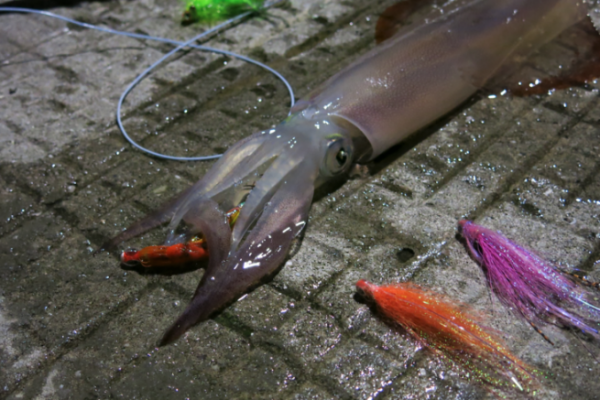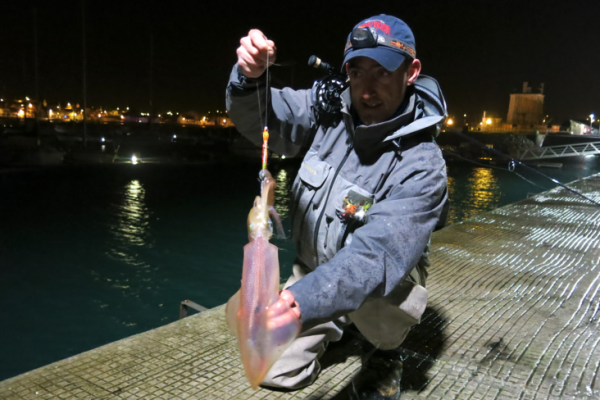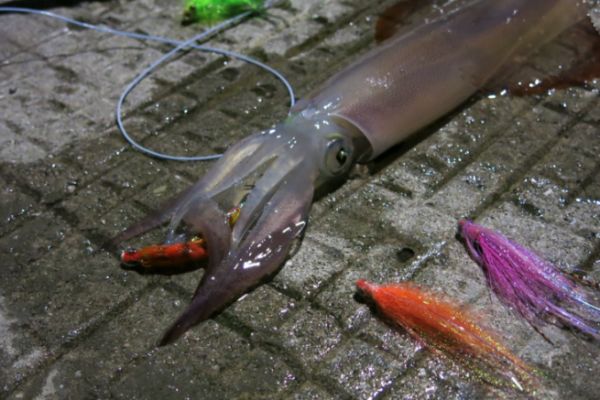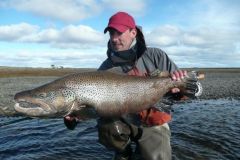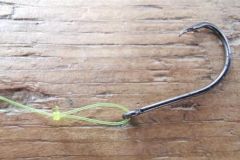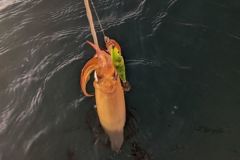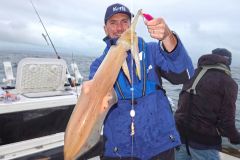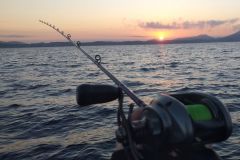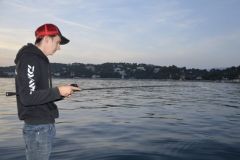A challenge to meet
For me, the real challenge and the first step in this quest was to be able to tie "special squid" flies, knowing that there was nothing on the subject on the internet or in fishing literature.
So I let my imagination run wild, while checking the internet for models of jigs used for this type of fishing, to get a good idea of sizes and colors. I knew it was possible to catch them with simple, very colorful streamers, as some sea anglers had already caught or touched them (without looking for them) with this type of fly. But very often without really being able to bring them back to shore and take them out, as they unhook easily, especially if the fly is mounted on a single hook.
It's important to know that squid are hooked by their tentacles, which often tear, except with hooks made up of several branches (basket).
A jig version of a tube fly
I decided to buy some jigging baskets that would allow me to hook our squid. Then I started thinking about a clever system for attaching it to a fly, or a "rig".
After a lot of thought, I came up with the trick of tying large tube-flies with lollipop sticks, as some pike fly-tyers do. The idea was to have a tube-fly that would abut a second tube to which would be attached on one side a basket (hooks) and on the other the eye of a conventional hook to connect the two parts.
After several attempts, I succeeded in obtaining the desired result. A 10-15 cm tube fly mounted (on a piece of 4 cm lollipop stick) using feathers, synthetic materials, dubbings and plastic legs to give plenty of movement, itself mounted on another 6-7 cm tube containing the basket.
By attaching these two tubes, the feathers and fibers as well as the legs come to cover the tube and end just flush with the basket. The aim is to position the basket as far back as possible, so as to sting the squid and avoid unhooking them during the "fight", which is very frequent.
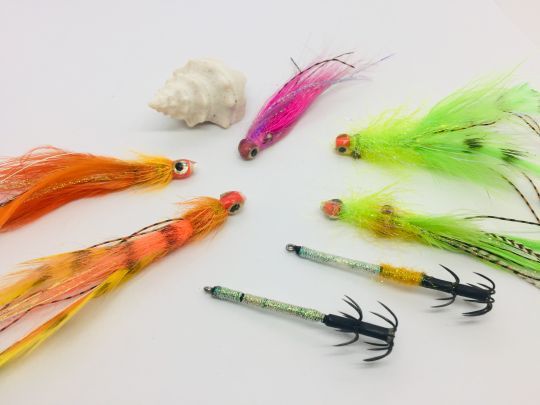
Manufacture of basket-tube assembly
For this first part of the fly, I used the jig baskets which I fixed and glued into a lollipop stick which has a perfectly adapted diameter. On the other side, I cut a hook to recover a stem, without the prickly part, and especially the eyelet.
Then I decorated the tube with a sheath called Flat Diamond Braid. On another model, I opt for a mix of Flat Diamond Braid and fluo orange dubbing.
Tube fly assembly
On another lollipop stick, which I cut to 4 cm, I mounted tube-flies as if fishing for salmon. Here, let your imagination guide you and try out different styles and colors. I decided to use bright colors like for jigs: orange, chartreuse, mauve, pink.
At the end of the tube, I mounted a few feathers or hackles and flashabou. I've also made models with Craft Fur, which is a flexible fiber that gives movement on breaks, instead of feathers. But it could be marabou, rabbit, etc... It's up to you.
Then I added rubber legs in identical or flashy colors.
The body is either made of fluorescent Spectra Dubbing from Hends, or Polar Chenille. Sometimes a hackle is added to the head for extra movement.
Some are weighted with diabolo eyes in the head, others have only a pair of 3D eyes plus a layer of epoxy. This makes for a solid assembly and adds a little weight to the front of the fly. It's not complicated, but it's effective.
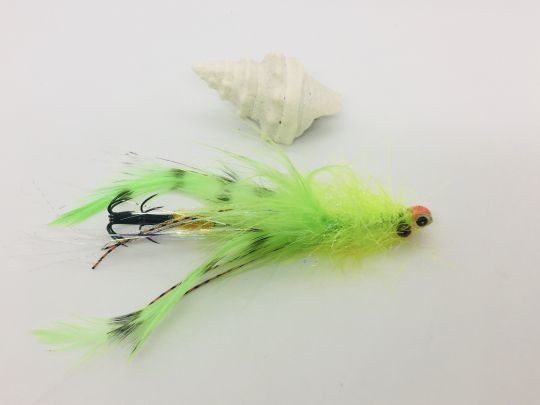
Squid fly-fishing techniques
I used a sea version of a 9-foot 8-grain rod, fitted with a floating line and a very deep 3 polyleader, followed by a 1 m leader in 30-35°. This makes it possible to cast this rather heavy rig quite well. No need to cast very far. Just look for areas where anglers congregate or under lampposts.
The technique is very simple. I copied the animations that my jigging friends used to do. That is, let the fly sink for a while (you can count to find out how deep it is), then animate with small slow or dry pulls to bring the fly up, followed by long pauses. The strike always comes after the pause. You need to strike, but gently, at the slightest heaviness, so as not to tear the squid's fragile tentacles.
Enjoy the editing and try your hand at, who knows, maybe your first fly-fishing cephalopod!

 /
/ 